Chongqing Lehe Ledu Animal Theme Park (Former Name: Chongqing Wildlife World) is located in Yongchuan District, Chongqing Municipality, and is a national 4A-level tourist attraction. Covering an area of over 5,000 mu (1 mu ≈ 0.0667 hectares) with a total investment of 3 billion yuan, it is a large-scale comprehensive tourism and vacation complex in western China. The park features a subtropical monsoon humid climate, offering pleasant weather conditions.
With "animals" as its core element, the scenic area is a large-scale ecological tourist park integrating wildlife protection, captive breeding, eco-tourism, popular science education, animal rescue, and leisure entertainment. It boasts the world's only and China's first free-range area for golden and silver white tigers, as well as China's first free-range area for Australian animals and the largest single introduction of African animals in China. The park is home to a rich variety of animal species, with over 430 species and more than 30,000 individual rare wild animals introduced from 14 countries across five continents worldwide. Among them, there are 260 species and over 10,000 individuals of animals under Class I and II of the Appendices to the Convention on International Trade in Endangered Species of Wild Fauna and Flora (CITES) and national key protected animals.
Historical Culture
In 2000, the State Forestry Administration approved the establishment of Chongqing Wildlife World, a national-level wildlife eco-tourism park. In December 2003, Chongqing Wildlife World was awarded the title of National AAAA-Level Tourist Area. In April 2007, Chongqing Wildlife World was transferred to the management of Chongqing Communications and Tourism Group.
In 2013, the opening ceremony of Chongqing Lehe Ledu Theme Park was held, which was an upgraded version based on the original Chongqing Wildlife World. On March 8, 2018, Chongqing Wildlife World was officially renamed Chongqing Lehe Ledu Animal Theme Park. In the same year, it was selected as a "National Practical Education Base for Primary and Middle School Students' Study Tours". In 2023, the scenic area introduced four giant pandas named "Qinghua", "Qinglu", "Qiaoyue", and "Ailian" from the China Conservation and Research Center for Giant Pandas.
Major Attractions
Vehicle Tour Area
Visitors can choose to tour by self-driving, taking a feeding sightseeing car, or a regular sightseeing bus. The Vehicle Tour Area passes through ten major zones: African Savanna, Eurasian Continent, Grassland Wolf Zone, Bear Zone, African Lion Zone, Bengal Tiger Zone, Harmonious Lion-Tiger Park, Golden and Silver White Tiger Zone, Mountain Wolf Zone, and Australian Bush. This allows visitors to get up close to wild animals.
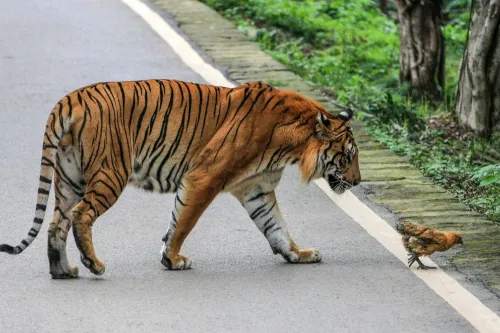
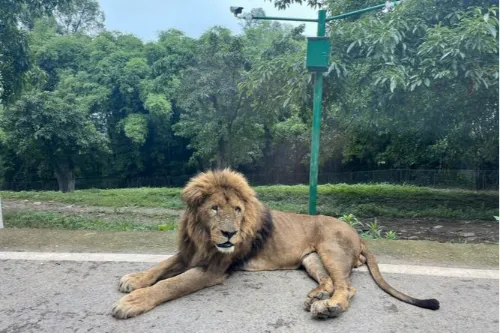
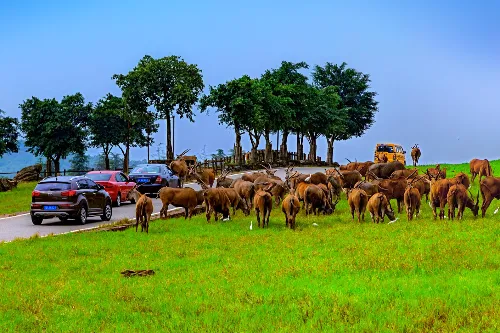
Pedestrian Tour Area
Covering an area of 1,800 mu, it is a mountainous zoo in China. Animals are arranged in zones according to categories: primates, amphibians, reptiles, birds, and mammals. The area is equipped with multiple animal enclosures, including Lion-Tiger House, Rhino and Hippopotamus House, Squirrel Monkey House, Chimpanzee House, and Rare Birds House. Visitors can also see four giant pandas ("Qinghua", "Qinglu", "Qiaoyue", and "Ailian") in the Slow Life Manor.
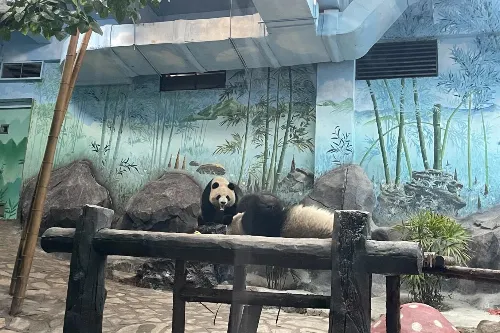
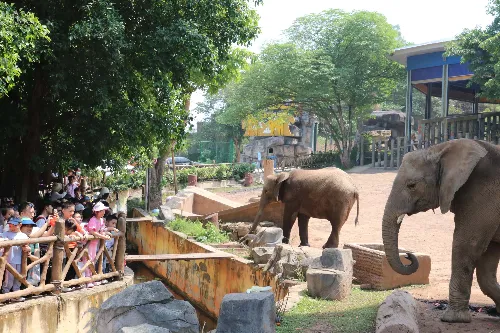
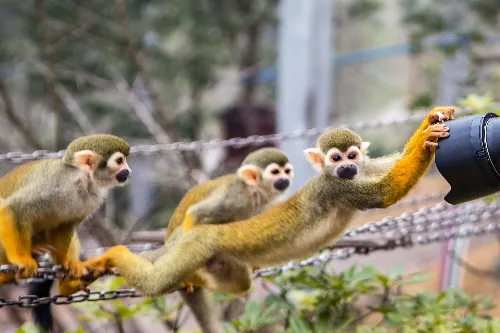
Happy World
It consists of 8 sections: Spring of Wisdom, Persian Mist, Storm Harbor, King Kong Mountain, Flying Dream Works, Magic Forest, Happy Mini Land, and Dolphin Theater. It has more than 30 amusement projects, as well as themed performances such as "Royal Circus" and the large-scale dolphin live show "Dolphin Alliance".
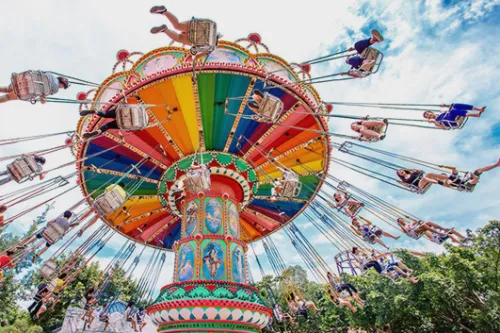
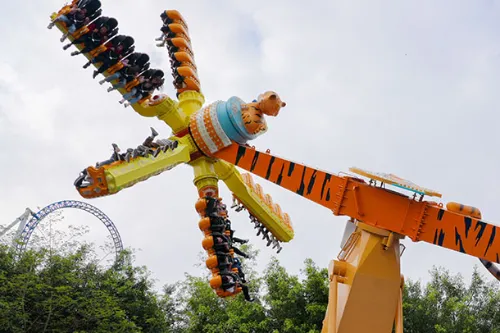
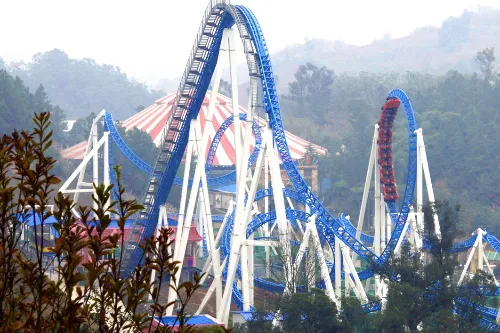
Water Park
Open during summer vacation, it covers an area of over 30,000 square meters and is located next to the Eskimo Ice and Snow World. It includes areas such as a wave pool, Jungle Speed Slide, Tahitian-style Water Fort, and Ocean Elf Children's Wading Pool, providing visitors with a cool experience.
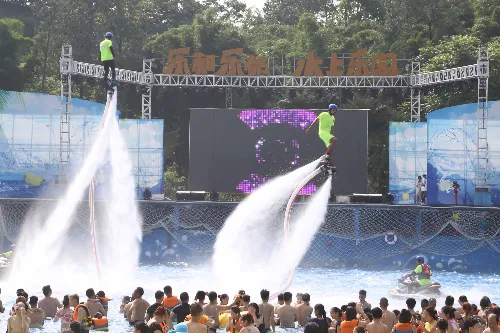
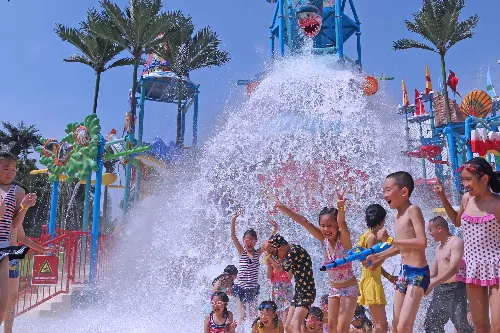
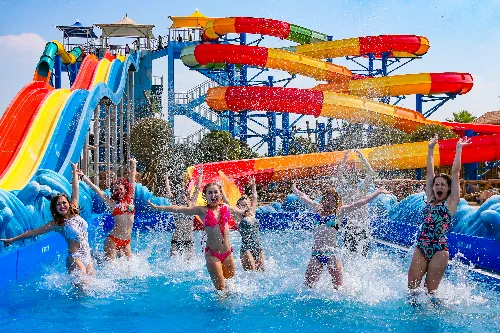
Tour Route
Visitors can start their tour from the Vehicle Tour Area, choosing to drive by themselves or take the sightseeing bus or feeding sightseeing car provided by the park to experience the excitement of getting close to ferocious animals, passing through ten major zones such as the African Savanna and Eurasian Continent in sequence. After that, head to the Pedestrian Tour Area to visit animal zones categorized by primates, amphibians, etc., to see various rare wild animals, and also go to the Slow Life Manor to visit the giant pandas. In the afternoon, visit Happy World to experience amusement projects and watch performances like "Royal Circus" or "Dolphin Alliance". If visiting during summer vacation, you can also arrange time to visit the Water Park.
Travel Tips
- It is recommended to pay attention to the scenic area's official website or WeChat official account in advance to learn about animal performance times and the opening status of amusement facilities, and arrange your itinerary reasonably.
- Since the park covers a large area, it is advisable to wear comfortable sports shoes for long walks.
- When visiting in summer, bring sun protection products such as sunscreen and sun hats, as some areas in the park have limited shade, so sun protection is important.
- You can bring some snacks and drinking water. Although there are catering facilities in the park, bringing your own supplies allows you to replenish energy at any time.
- For visitors with children, you can explain some animal knowledge to your kids in advance to enhance the fun of the tour and the effect of popular science education.
Precautions
- Open flames are strictly prohibited in the park to prevent fires and protect the living environment of wild animals.
- When touring, follow the designated routes and do not enter unopened areas without permission to avoid danger.
- Respect animals and do not feed them with your own food, as this may affect their health or cause danger.
- Take good care of the park environment, do not litter, and keep the park clean.
- When using amusement facilities, strictly follow the instructions of the staff and abide by safety regulations.
- When driving into the Vehicle Tour Area, be sure to close the car windows, do not get off the car midway, and follow the instructions of the park staff.
Transportation
- Public Transportation: From the main urban area of Chongqing, take a high-speed train or intercity EMU to Yongchuan East Railway Station, then take buses such as Route 303 or Route 501 to Chongqing Lehe Ledu Animal Theme Park.
- Self-Driving: Depart from the main urban area of Chongqing, take the Chengdu-Chongqing Expressway or Chongqing-Chengdu Expressway, exit at Yongchuan Interchange, then follow the navigation instructions to the scenic area. The driving time is approximately 1 hour.
Opening Hours
The Pedestrian Tour Area of the Animal World is open from 09:30 to 17:00 from Monday to Friday, and from 09:30 to 17:30 on Saturdays and Sundays throughout the year. The opening hours of other areas such as Happy World and Water Park may vary according to seasons and park arrangements. For the most accurate information, please refer to the official announcement of the scenic area.
Tickets
The ticket price is 165 yuan per person. You can search for the WeChat service account "重庆乐和乐都动物主题乐园" to get the latest updates or purchase tickets online.
Online Booking
Click here to jump to the Trip.com ticketing platform for ticket purchase.


